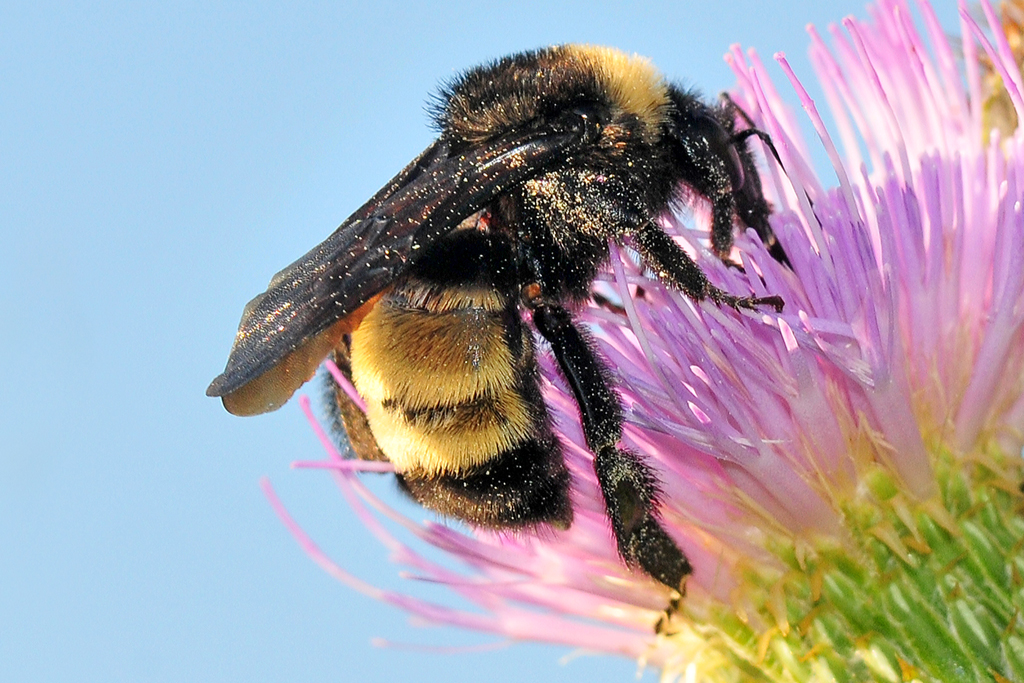Interactions
Pollination
Pollination is directly responsible for the reproduction
of plants, which has great economic impact on the availability of
plants for commercial purposes (Pollinator Partnership 2013).
Pollination is a mutualistic relationship between the Bombus
pensylvanicus and certain flowering plant species;
The decline of Bombus pensylvanicus is of concern
because of their ecological role as pollinators. Though there is no
conclusion as to a concrete explanation for the
American Bumble Bees' decline, there are strong suggestions that it could be
attributed to the parasite Nosema bombi—an ”obligate
intracellular microsporidian parasite” (Cameron et al. 2011). A
study published in the Journal of Invertebrate Pathology tested the
effects of N. bombi on bumble bee fitness. An infected queen
will pass the pathogen onto future generations (Otti and
Schmid-Hempel 2007). Although it seems to have no
effect on her reproductive success, it decreases the sperm count and
survival rates of her male offspring, which in turn reduces the
number of males for the daughter queens to mate with and the
reproductive success of the colony (Otti and Schmid-Hempel 2007).
Spores of N. bombi are introduced into the environment by the
feces or decaying body of an infected host; the spores then infect
other individuals as a susceptible organism ingests the spores (Ottie
and Schmid-Hempel 2007). Other bumble pathogens to note are
Apicys tisbombi, Crithidia bombi, Crithidia expoeki,
Locustacarus buchneri (Meeus et al. 2011).
